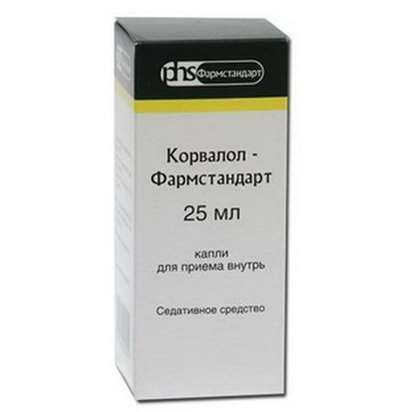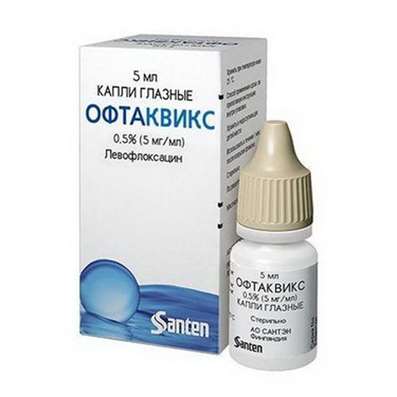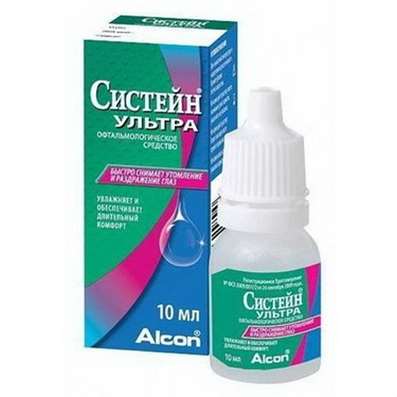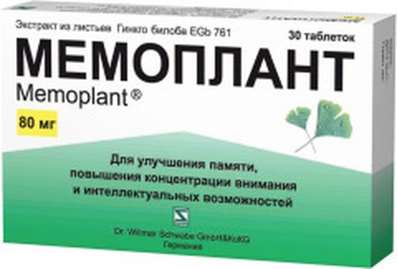Instruction for use: Esmolol (Esmololum)
I want this, give me price
chemical name
(+) - 4- [2-Hydroxy-3 - [(1-methylethyl) amino] propoxy] benzenepropanoic acid methyl ester (as hydrochloride)
Pharmacotherapeutic group:
Beta-blockers
The nosological classification (ICD-10)
E05.5 Thyroid crisis or coma
thyrotoxic crisis, hypothyroid coma, Crease tireotoksicski
I10 Essential (primary) hypertension
Hypertension, Arterial hypertension, Arterial hypertension crisis course, Essential Hypertension
Primary hypertension, Arterial hypertension, complications of diabetes, hypertension, The sudden increase in blood pressure, Hypertensive disorders of blood circulation, hypertensive condition, hypertensive crises, hypertension, arterial Hypertension, malignant Hypertension, Hypertonic disease, Hypertensive crisis, Hypertension, accelerated hypertension, malignant hypertension, The aggravation of hypertensive disease, Transient hypertension, Isolated systolic hypertension
I15 Secondary hypertension
Arterial hypertension, complications of diabetes, hypertension, The sudden rise in blood pressure, Hypertensive disorders of blood circulation, hypertensive condition, hypertensive crises, hypertension, arterial hypertension, malignant hypertension, Hypertensive crisis, Hypertension, accelerated hypertension, malignant hypertension, hypertensive crisis, The aggravation of hypertensive disease, Transient hypertension, hypertension, Arterial hypertension, Arterial hypertension crisis course, renovascular hypertension, symptomatic hypertension, renal hypertension, Renovascular hypertension, Symptomatic hypertension
I20.0 Unstable angina
Unstable angina, heberden disease
I21 Acute myocardial infarction
Myocardial infarction in the acute phase, Acute Myocardial Infarction, Myocardial infarction with pathologic Q wave and without, Myocardial infarction complicated by cardiogenic shock, Infarction left ventricular, Transmural myocardial infarction, Myocardial infarction netransmuralny (subendocardial), Netransmuralny myocardial infarction, Subendocardial myocardial infarction, The acute phase of myocardial infarction, Acute myocardial infarction, Sub-acute phase of myocardial infarction, Subacute phase of myocardial infarction, Thrombosis of the coronary arteries (the arteries), Threatened myocardial infarction, Myocardial infarction without Q wave
I47.1 Supraventricular tachycardia
Supraventricular paroxysmal tachycardia, supraventricular tachyarrhythmia, Supraventricular arrhythmias, Supraventricular paroxysmal tachycardia, supraventricular tachyarrhythmias, Neurogenic sinus tachycardia, orthodromic tachycardia, Paroxysm of supraventricular tachycardia, Paroxysm of supraventricular tachycardia with WPW-syndrome, Paroxysm of atrial tachycardia, Paroxysmal supraventricular tachyarrhythmia, Paroxysmal supraventricular tachycardia, Politopnye atrial tachycardia, Atrial fibrillation, Atrial tachycardia is true, Atrial tachycardia, Atrial tachycardia with AV block, reperfusion arrhythmias, Reflex Bertsolda-Jarisch, Recurrent sustained supraventricular paroxysmal tachycardia, Symptomatic ventricular tachycardia, Sinus tachycardia, Supraventricular paroxysmal tachycardia, Tachycardia of AV connections, Tachycardia orthodromic, sinus tachycardia, The nodal tachycardia, Chaotic atrial tachycardia politopnye, Wolff-Parkinson-White
I48 Atrial fibrillation and flutter
Permanent atrial tachyarrhythmias, Relief frequent ventricular rate during atrial flutter or blink, atrial fibrillation, Paroxysm of atrial fibrillation and flutter, Paroxysm of atrial fibrillation, Paroxysmal atrial fibrillation, Atrial premature beats, Tahisistolicheskoy atrial fibrillation, auricular flutter, Life-threatening ventricular fibrillation, Atrial fibrillation, Chronic atrial fibrillation, supraventricular arrhythmia, Paroxysmal atrial fibrillation and flutter, Paroxysmal fibrilloflutter, Atrial premature beats
Code CAS103598-03-4
Characteristics
Esmolol hydrochloride - white or almost white crystalline powder. Hydrophilic compound is relatively well soluble in water and readily soluble in alcohol. Partition coefficient (octanol / water) at pH 7,0 is 0.42. Molecular weight - 331.8. It has one asymmetric center and exist as an enantiomeric pair.
Pharmacology
antianginal, hypotensive, anti-arrhythmic.
Cardioselective beta1-blocker, deprived of its own sympathomimetic and membrane stabilizing activity. It has a negative chrono, ino, Drome and batmotroponoe action. Suppresses sinus node automaticity, prolongs the refractory period and slowing down on the AV node. Stops central sympathetic impulses and reduces the sensitivity of peripheral tissues to catecholamines. It reduces heart rate, myocardial oxygen consumption of the heart (antianginal effect), cardiac output and blood pressure. Antianginal and antihypertensive effect lasts 10-20 minutes after stopping the infusion.
The on / in the introduction is associated with malnutrition by 55% in the red blood cells is rapidly hydrolyzed by esterases to free the acid metabolite (Activity is 1/1500 from that esmolol) and methanol. T1 / 2 - 9 min, the free acid metabolite - 3.7 h (10-fold increases in renal insufficiency). The equilibrium concentration in the blood is within 5 min using a loading dose, and 30 minutes without it. Excreted by the kidneys as metabolites.
At doses exceeding the maximum supported for man 8 times (rabbits) and 30 times (rats), it has a toxic effect on the body of the mother, increases the rate of resorption of fetuses and mortality.
Indication
Arterial hypertension, sinus tachycardia, supraventricular tachycardia and tachyarrhythmias (including atrial fibrillation, and atrial flutter, including during and after operations), myocardial infarction, unstable angina, thyrotoxic crisis, pheochromocytoma.
Contraindications
Hypersensitivity, sinus bradycardia (less than 45 u. / Min), cardiogenic shock, AV block II-III degree, expressed heart failure syndrome sick sinus, sinoatrial block, hypotension (Sad below 90 mm Hg. Art., DBP below 50 mm Hg. Art.), bleeding, hypovolemia.
Restrictions apply
Bronchial asthma, emphysema, chronic obstructive bronchitis, congestive heart failure, diabetes mellitus, renal dysfunction; secondary hypertension due to vasoconstriction against hypothermia during or after surgery; pregnancy, lactation, children's age (safety and efficacy of the children are not identified), advanced age.
Pregnancy and breast-feeding
When pregnancy is possible if the expected effect of therapy outweighs the potential risk to the fetus. Although adequate and well-controlled studies of the safety in pregnant women has not carried out, using esmolol in the last trimester of pregnancy and childbirth reported on the development of bradycardia in the fetus, continue after the end of infusion drugs.
Category effects on the fetus by FDA - C.
Not recommended for use during breastfeeding (no data on the penetration of breast milk).
Side effects
The incidence of side effects when using esmolol evaluated in 369 patients with supraventricular tachycardia and in more than 600 patients during or after the operations included in clinical trials. Most marked effects were mild and transient. The most significant side effect has been hypotension (see. "Precautions"). During the post-marketing studies have reported deaths encountered in clinical states where esmolol was probably used to control ventricular rate (see. "Precautions").
From the nervous system and sensory organs: dizziness (3%), somnolence (3%), headache (2%), agitation (2%), confusion (2%), fatigue (1%); less than 1% - a slight dizziness, fatigue, paresthesia, depression, anxiety, convulsions, impaired thinking, taste, sight and speech.
Cardio-vascular system and blood (blood, hemostasis): symptomatic hypotension (accompanied by sweating, dizziness) - 12% (therapy was discontinued in about 11% of patients, half of which are marked, symptomatic hypotension), asymptomatic hypotension - 25% , violation of the peripheral circulation (1%); less than 1% - pallor, flushing, bradycardia (less than 50 beats / min), chest pain, palpitations, syncope, AV block, pulmonary edema. In 2 patients without supraventricular tachycardia but with serious coronary artery disease (a condition after myocardial infarction or unstable angina) developed reversible (at the termination of treatment) severe bradycardia / sinus pause / asystole.
From the digestive tract: nausea (7%), vomiting (1%); less than 1% - dry mouth, dyspepsia, anorexia, constipation, abdominal discomfort.
From the respiratory system: less than 1% - nasal congestion, wheezing in the chest, shortness of breath, dyspnea, bronchospasm.
For the skin: infusion reactions, including inflammation and induration at the injection site (in 8% of cases); less than 1% - edema, erythema, skin discoloration, burning at the injection site, skin necrosis (at extravasation).
Others: less than 1% - fever, sweating, chills, urinary retention, pain in the interscapular region, cold hands and feet, withdrawal syndrome.
Interaction
Potentiates the effect of non-depolarizing muscle relaxants, cardiodepressive action quinidine, procainamide, disopyramide and verapamil. It increases the risk of bradycardia and hypotension in the background of reserpine. Sympathomimetics and xanthine derivatives weaken (mutually) effects; Other antihypertensive drugs - increase hypotension. Increases in plasma levels of digoxin; warfarin, morphine and increase the plasma concentration of succinylcholine. Incompatible in the same syringe with other agents, including with 5% sodium bicarbonate solution.
Overdose
Symptoms: excessive lowering of blood pressure, bradycardia, ventricular premature beats, heart failure, bronchospasm. Esmolol overdose can cause cardiac arrest.
Treatment: the patient giving the Trendelenburg position, oxygen therapy, in / in a liquid (if there is no pulmonary edema); Symptomatic therapy: bradycardia - atropine sulfate, dobutamine or isoproterenol (possible use of epinephrine or holding transvenous pacing); heart failure - I / O assignment of cardiac glycosides and / or diuretics; with hypotension - a vasoconstrictor (epinephrine, norepinephrine, dopamine, dobutamine), under the control of blood pressure; PVCs are diluted in / with the introduction of lidocaine or phenytoin, bronchospasm - in / in the introduction of beta2-agonists (isoproterenol) or xanthine derivatives. Maybe I / O assignment of glucagon to correct bradycardia or hypotension.
Routes of administration
in.
Precautions
When using esmolol requires careful and constant medical supervision and ECG monitoring, blood pressure, heart rate and other indicators.
Hypotension. In clinical studies, 25-50% of patients treated with esmolol, hypotension was observed, usually defined as the Sad below 90 mm Hg. Art. and / or DBP below 50 mm Hg. Art. About 12% of patients had mostly symptomatic hypertension (mostly profuse sweating, dizziness). Hypotension may occur at any dose but is dose-dependent, therefore, doses above 200 mg / kg / min is not recommended. Particularly careful control of blood pressure is necessary in patients with low baseline blood pressure before treatment. By reducing the dose or end of infusion hypotension disappears, usually within 30 minutes.
Heart failure. At the first signs or symptoms of heart failure, esmolol should be abolished and, if necessary, to carry out specific therapy. The use of esmolol for control of ventricular rate in patients with supraventricular arrhythmias should be used with caution if the patient has impaired hemodynamics, or in the case of the reception of other substances which reduce the peripheral resistance, cardiac filling, cardiac contractility, distribution electrical pulse to the myocardium, as despite the rapid onset of action and the development of esmolol effect, reported several cases of lethal use of esmolol is likely to control the ventricular rate.
Tachycardia and / or hypertension during and after surgery. Esmolol is not recommended in patients with secondary hypertension, associated with vasoconstriction due to hypothermia.
Bronchospastic diseases. Because esmolol is a cardioselective blocker, it can be used in patients with bronhospasticheskimi diseases, but with caution, carefully titrating the dose to achieve the lowest effective. In the case of bronchospasm infusion should be stopped immediately; if necessary, can be used beta2-stimulating substance, but with very great care, if the patient has experienced rapid ventricular rate.
Diabetes and hypoglycemia. It is necessary to consider the possibility of masking symptoms of hypoglycaemia (tachycardia, hypertension) in patients with diabetes. Against the background of aggravated allergic history perhaps more severe manifestation of hypersensitivity reactions and the lack of therapeutic effect of conventional doses of epinephrine. At concentrations above 10 mg / ml of possible tissue irritation. If there is a local reaction at the infusion, administration should be discontinued and restart elsewhere.
special instructions
Solution at a concentration of 250 mg / mL should be diluted before use. Infusion solution (concentration 10 mg / ml) prepared by adding 5 g (20 ml of a solution with a concentration of 250 mg / ml) of esmolol in a bottle with a liquid for the on / in a volume of 500 mL (pre aseptically removed with 20 ml thereof). Cooked

 Cart
Cart





